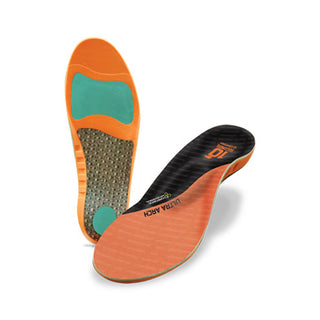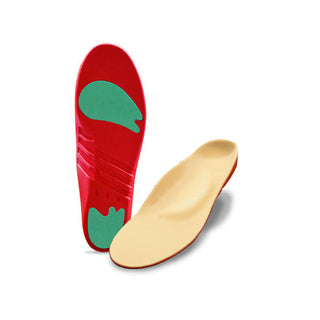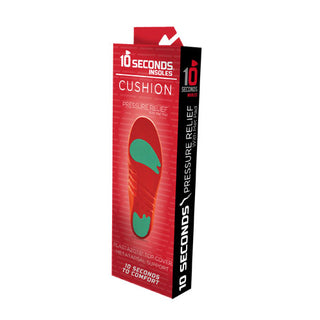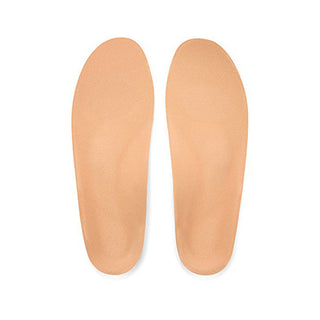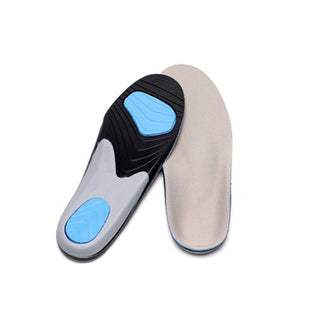Turf Toe Symptoms and Relief
Recommended for Turf Toe Symptoms and Relief
View allFeeling a pain in the main joint of your big toe?
While turf toe is mainly associated with American football (where players spend a lot of time on artificial turf), it can affect athletes of all sports as well as active individuals. Turf toe is a very common (and painful) condition caused by a sprain in the big toe from jamming it repeatedly into a hard surface.
Read on to learn more about the causes and treatment for turf toe.
What is Turf Toe?
Turf toe is a sprain in the main joint in the big toe.
It’s a common injury in athletes who engage in sports that involve running or jumping on hard surfaces. Turf toe occurs when the big toe is forcibly bent upwards, stretching or tearing the soft tissue structures under the toe.
The term "turf toe" originated because this injury is especially common among athletes who play on artificial turf, where the foot can stick to the hard surface more easily, leading to increased force on the toe when changing direction or pushing off during running.
Symptoms of Turf Toe
The primary symptom of turf toe is pain in the main joint in the big toe. Other symptoms can include:
- Swelling
- Stiffness
- Limited range of motion at the base of the toe
If the sprain occurs suddenly a pop may be heard/felt and pain will start immediately and increase over the following day(s).
What Causes Turf Toe
Turf toe is a sprain caused by a hyperextension of the big toe joint.
This injury typically happens in two main ways:
- The most common cause of turf toe is when the toe is forced to bend upwards excessively. This often happens in sports when an athlete's forefoot is planted firmly on the ground (often on artificial turf, hence the name), and the rest of the body moves forward over the planted foot, forcing the toe into an extended position. This action can stretch or tear the ligaments under the toe.
- Less commonly, turf toe can also result from repetitive actions that put a strain on the big toe joint. This kind of repetitive stress can gradually weaken the ligaments and other soft tissues around the joint, eventually leading to a sprain.
The risk of turf toe is increased by certain factors, such as playing on artificial turf surfaces, which are harder and less forgiving than natural grass, and wearing footwear that provides inadequate support to the foot, particularly in the toe area. Sports that involve a lot of jumping, pivoting, or pushing off with the toes, like football, soccer, basketball, and dance, are associated with a higher risk of this injury.
How to Treat Turf Toe
Turf toe can often be treated with rest and ice though in rare cases may need medical attention. If you feel a sprain in one of your big toes, start with the following treatments:
- Rest: It's crucial to avoid activities that put pressure on the injured toe. Continuing to use the injured joint can worsen the injury and prolong recovery time.
- Ice: Applying ice to the affected area can help reduce swelling and pain. It's generally recommended to ice the toe for 20 minutes at a time, several times a day, especially in the first few days following the injury.
- Compression: Using a compression bandage can help minimize swelling and provide support to the injured toe.
- Elevation: Elevating the foot above heart level, especially during the first 48 hours after the injury, can help reduce swelling.
- Pain Relief: Over-the-counter pain relievers like ibuprofen or acetaminophen can be used to manage pain.
For more serious cases, the following treatment options may be needed:
- Protective Footwear: Wearing shoes with a stiff sole or supportive insoles can help limit the movement of the big toe and provide support during the healing process. In some cases, a walking boot or cast may be necessary.
- Physical Therapy: After the acute phase, physical therapy may be recommended to restore strength and flexibility to the toe. Exercises to improve range of motion are particularly important.
In severe cases, surgery might be necessary to repair the damaged tissues. It's important to follow the guidance of a healthcare professional for proper diagnosis and treatment of turf toe, as the severity of the injury can vary significantly.
Can Insoles Help With Turf Toe?
Insoles can help manage turf toe, particularly for athletes who are returning to activity after recovering from the injury.
The main benefits of using insoles for turf toe include:
- Quality insoles can provide additional support to the foot, especially around the arch and the ball of the foot.
- Some insoles are designed specifically to limit the amount of hyperextension in the toe. These often have a stiffer construction under the big toe to prevent excessive upward bending.
- Insoles with good cushioning can help absorb impact and reduce the force transmitted through the toe joint during activities like running or jumping.
- Insoles can improve the overall fit of your shoes, ensuring that your foot is properly aligned and supported. This can be particularly important if your shoes are a contributing factor to your injury.
It’s important to remember that while insoles can help to relieve pain or prevent turf toe, they are not a replacement for advice from a qualified healthcare professional. When in doubt, we recommend consulting with a healthcare professional to determine the best treatment and preventive strategies for your individual case.

